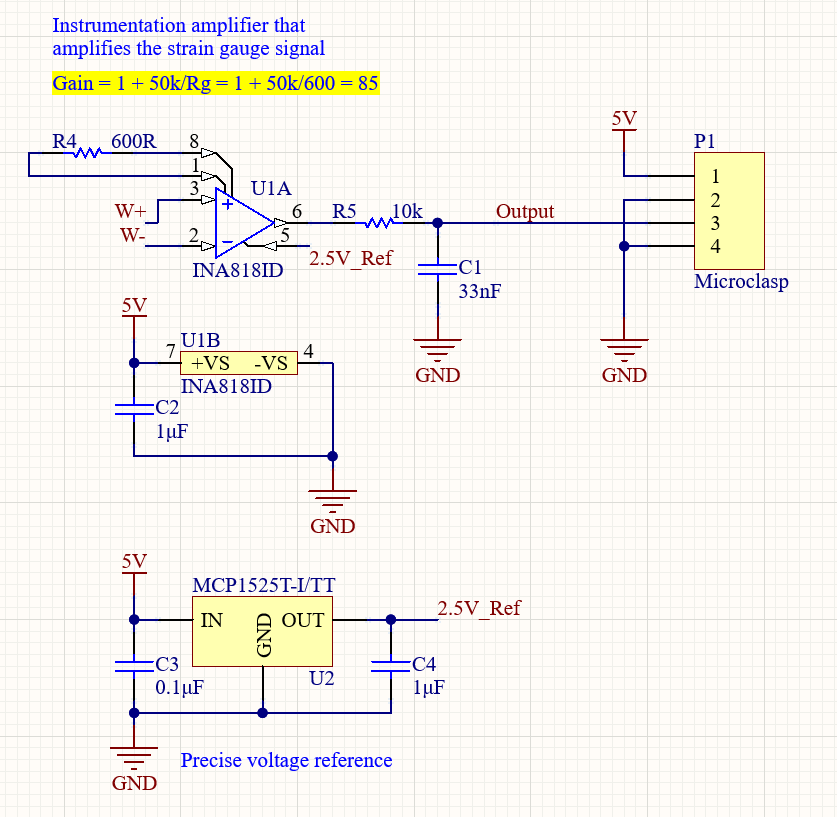-
1Schematics
First, we need to make a schematic in Altium Designer or any other PCB design software. The schematic needs to be complemented by appropriately-sized components such as the INA818ID amplifier.
Our board is powered by a low voltage 5V input. We used a quarter-bridge or full-bridge custom configuration with very precise resistors (0.1%). The electrical output in W+ and W- then enters our INA818ID amplifier and is amplified 85 times. You can modify the amplification gain by changing the value of the R4 (600ohms) resistor. We also use a precise voltage reference of 2.5V in our amplifier by having the MCP1525T-I/TT perform that task. The output is then sent into a MicroClasp header that we can connect with wires into our vehicle controller computer.
-
2Board Layout
The second step consists of physically placing the components on the PCB, ensuring the right footprints are being utilized. On a small board like this, using a polygon pour to connect the ground (GND) plane is very beneficial. Even complicated traces and polygons on such a small board will be precisely manufactured by JLCPCB, so use that to your advantage.
-
3Gerber Files
Once the design of the PCB is done, it is time to generate the files that will be sent to JLCPCB to manufacture it. These files are called Gerber files and they are an industry standard used to describe PCB fabrication data. Each layer of the PCB (copper layers, solder masks, overlays, etc.) corresponds to a single file.
To make them ready for ordering, combine all files into a single ZIP archive.
-
4Order from JLC PCB
As mentioned previously, you cannot go wrong with the manufacturing precision and quality that JLCPCB provides. JLCPCB is cost-efficient and has a quick turnaround with your PCB order.
Ordering PCBs from JLCPCB is a very simple process.
1. Go to JLCPCB and click on the Instant Quote button.
2. Add the ZIP archive containing the Gerber files to the dedicated space.
3. Review the Gerber with the provided Gerber viewer. We recommend ordering a SMT-Stencil to help you with soldering.
4. Setup the options such as color, thickness, and quantity. MFE boards are usually red.
5. You can get 5 PCBs for only 4$! When ready, click on SAVE TO CART.
6. And that's it!
Compact Strain Gauge Board for MFE22
Our racecar uses 16 strain gauge PCBs to measure strain force at the wheels
 McGill Formula Electric
McGill Formula Electric







Discussions
Become a Hackaday.io Member
Create an account to leave a comment. Already have an account? Log In.